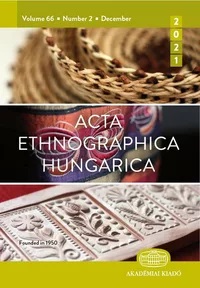District Wardens in the Cities of Northern Hungary in the 18th to 21st Centuries
District Wardens in the Cities of Northern Hungary in the 18th to 21st Centuries
Author(s): Tivadar PetercsákSubject(s): Customs / Folklore
Published by: Akadémiai Kiadó
Keywords: tizedes (“tenth”); fertálymester / viertelmeister; district warden; election; tax gathering; law and order; heritage preservation
Summary/Abstract: In Hungarian settlements, tizedek (tenths), streets, divisions, and fertályok (viertels, quarters, or districts) were areas that enjoyed a certain autonomy. They were led by elected “decurions,” “street captains,” or “captains” in Hungarian-populated settlements, and by viertelmeisters, or district wardens, in German-speaking settlements. These officials liaised between the municipal authorities and the local community. From the 16th century until the mid-19th century, the decurions and district wardens had official powers, kept the population informed about national and local regulations, helped carry out local censuses, collected taxes, and organized public works. They played a key role in maintaining law and order in their neighborhoods, and in ensuring protection from fire. In the northeastern region of present-day Hungary, we have information concerning the history of the district wardens in the cities of Eger, Gyöngyös, and Miskolc, while in the case of Eger the tradition is still in existence today. There were decurions in Eger as early as the end of the 17th century, who were replaced by district wardens from the 1710s. The position existed in Gyöngyös from the middle of the 18th century until 1874. In Miskolc, there were district wardens from 1794 to 1800. After a hiatus of half a century, the position was then restored, while in 1884 the parallel position of “section warden” was abolished. In Eger, district wardens were active until 1949, then, after a forced interruption in the Socialist era, the institution was revived in 1996, becoming an important element in local identity through its heritage preservation activities. The present study introduces the different eras in the institution of the district warden, its changing functions, its organizational structure, its symbols, and its various forms of social interaction. Eger is the only city in Hungary in which this centuries-old office is still preserved today, justifying the inclusion of this living custom in the UNESCO National Inventory of Intangible Cultural Heritage in 2014.
Journal: Acta Ethnographica Hungarica
- Issue Year: 67/2022
- Issue No: 1
- Page Range: 221-232
- Page Count: 12
- Language: English

